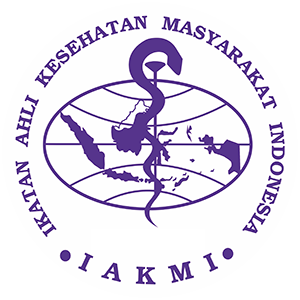UPAYA PENINGKATAN KESEHATAN JIWA MASYARAKAT MELALUI COMMUNITY MENTAL HEALTH NURSING DI KOTA PADANG TAHUN 2021
DOI:
https://doi.org/10.30787/gemassika.v2i2.787Keywords:
Kesehatan Jiwa Masyarakat, Community Mental Health NursingAbstract
Mental health is self-control in dealing with stressors in the surrounding environment by always thinking positively in harmony without any physical and psychological pressure, both internally and externally that leads to emotional stability. One of the problems that occur in mental health is a psychosocial problem in the form of anxiety. Anxiety often occurs because of excessive anxiety with the condition you have, the same thing often happens to people with non-communicable diseases. One solution to the problem in this case is to do CMHN. The purpose of this community service is to increase community independence in tackling mental health problems in the city of Padang. The method used is in the form of socializing mental programs to community leaders, providing training to mental health cadres (KKJ) on early detection, home visits and mobilizing the community and health education to the community about non-communicable diseases. The conclusions obtained were that there was an increase in cadre knowledge after the action and the results of early detection of the 1403 population there were 1% (23 people) with mental disorders, 12% (164 people) with the risk of psychosocial problems and the rest (87%) were mentally healthy.
References
Diagnosa Keperawatan: Defenisi dan Klasifikasi (2012). Jakarta: EGC.
Keliat, B. . and Pasaribu (2016) Prinsip dan Praktik Keperawatan Kesehatan Jiwa Stuart. Singapura: Elsevier.
Kretchy (2014) ‘Mental health in hypertension: assessing symptoms of anxiety, depression and stress on antihypertensive medication adherence. International’, Journal of Mental Health Systems, 8(25).
Kurniawan, Y. and Sulistyarini, I. (2016) ‘Komunitas SEHATI (Sehat Jiwa dan Hati) sebagai intervensi kesehatan mental berbasis masyarakat’, INSAN Jurnal Psikologi Dan Kesehatan Mental, 1(2), pp. 112–124.
Legi, N. . (2015) ‘Faktor yang berhubungan dengan keaktifan kader posyandu di Wilayah Kerja Puskesmas Ranotana Weru’, Jurna GIZODO, 7(2).
Liou (2014) ‘Prevalence And Related Risk Factors Of Hypertensive Patients With Co-Morbid Anxiety And/Or Depression In Community: A CrossSectional Study’, Zhonghua Yi Xue Za Zhi, 7(94), pp. 6–62.
Muhith, A. (2015) Pendidikan Keperawatan Jiwa. (M. Bendetu, Ed.) (1 st ed). Yogyakarta: Andi.
Novianti, E., Tobing, D. L. and Wibisono., B. (2020) ‘Upaya Promotif dan Preventif Kesehatan Jiwa melalui Deteksi Dini Berbasis’, Jurnal Keperawatan Jiwa (JKJ): Persatuan Perawat Nasional Indonesia, 8(1), pp. 69–74.
Nurhalimah (2016) Modul Bahan Ajar Keperawatan Jiwa. Edited by P. K. RI. Jakarta.
Nursalam (2014) Manajemen Keperawatan. III. Jakarta: Salemba Medika.
Riskesdas (2018) Riset Kesehatan Dasar 2018. Jakarta.
Rosiana M, A., Setyaningrum, Y. and Azizah, N. (2016) ‘Ipteks bagi masyarakat (ibm) kelompok kader kesehatan jiwa di Desa Pasuruhan Kidul Kabupaten Kudus dalam upaya pemberdayaan kader kesehatan jiwa untuk meningkatkan kemandirian dengan metode “one volunter one patientâ€.’
Stuart (2016) Prinsip dan Praktek : Keperawatan Kesehatan Jiwa. Elsevier.
Suhat and Hasanah, R. (2014) ‘Faktor-faktor yang berhubungan dengan keaktifan kader dalam kegiatan posyandu’, Jurnal Kesehatan Masyarakat, 10(1).
Sutarjo, P., Prabandari, Y. . and Iravati, S. (2016) ‘Pengaruh pelatihan community mental health nursing pada self efficacy dan keterampilan kader kesehatan jiwa. Berita kedokteran Masyarakat’, BKM Journal of Community Medicine and Public Health, 2(32), pp. 67–72.
Townsend (2014) CARN (Collaborative Action Research Network). London: Routledge.
WHO (2016) World Health Organization.
Winahayu, E., Keliat, B. . and Wardani, I. . (2016) ‘Sustainability Factor Related with the Implementation of Community.’
Yosep, I. (2010) Keperawatan Jiwa. 3rd edn. Bandung: PT. Refika Aditama.
Downloads
Published
How to Cite
Issue
Section
License
Copyright (c) 2023 GEMASSIKA : Jurnal Pengabdian Kepada Masyarakat

This work is licensed under a Creative Commons Attribution-NonCommercial 4.0 International License.












